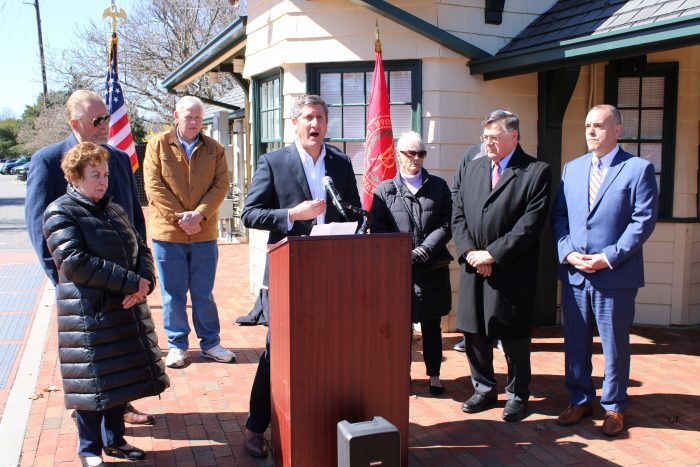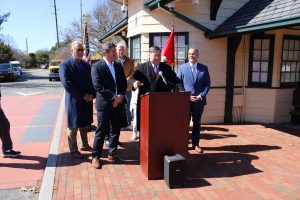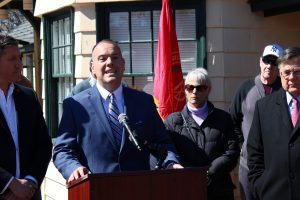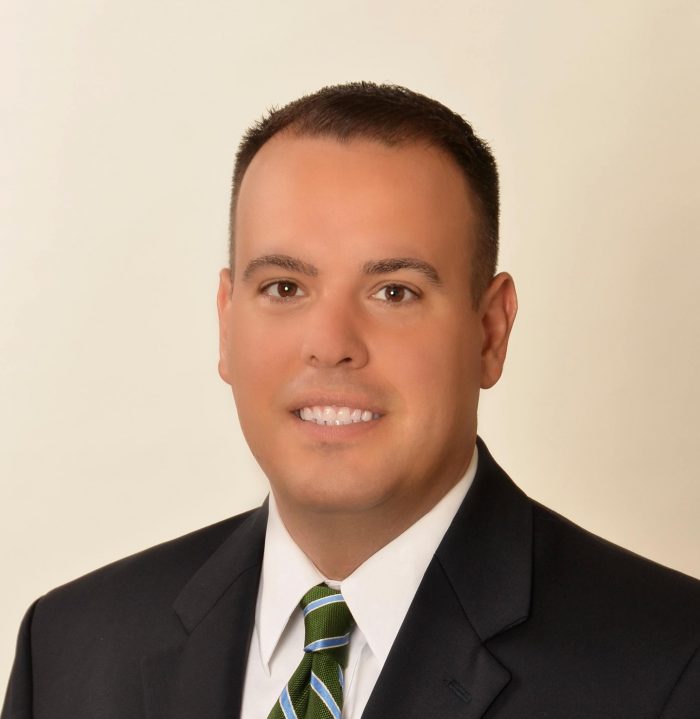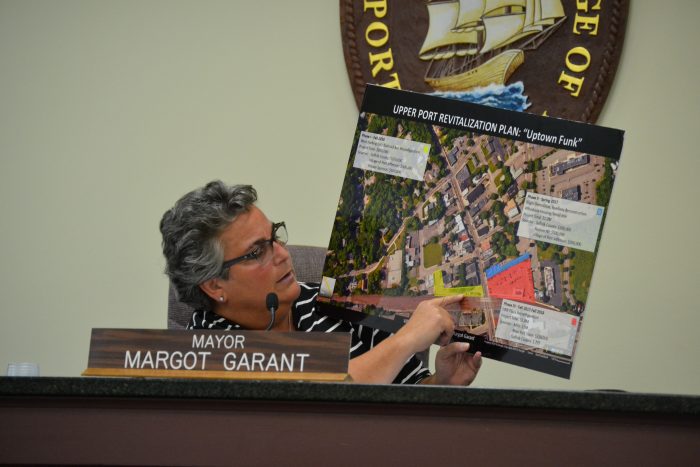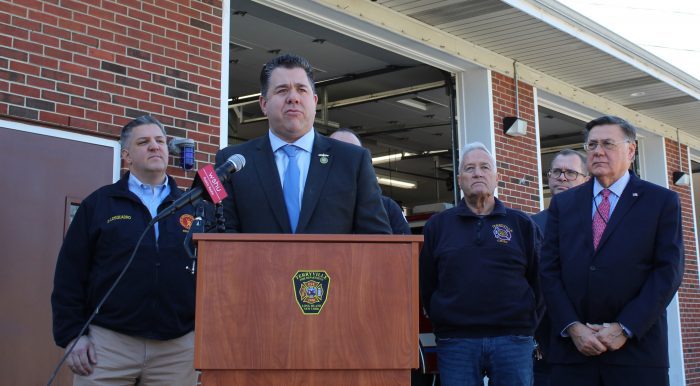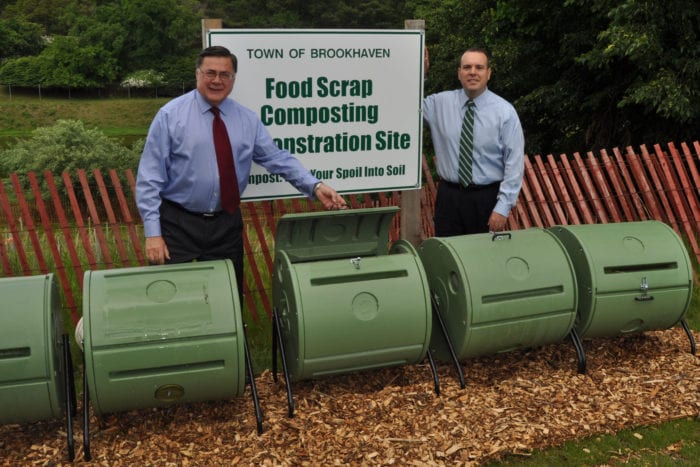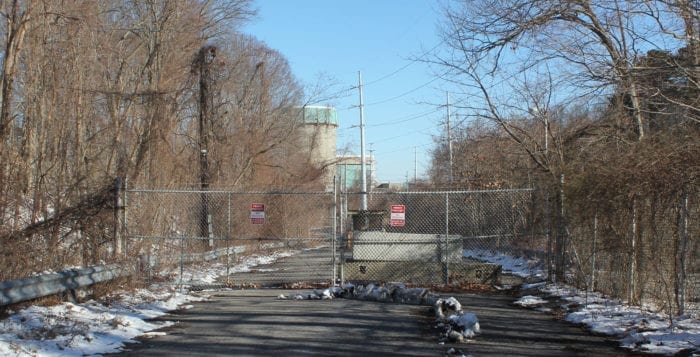In the wrong township
Regarding the April 6 article, “Brookhaven officials speak out against governor’s proposed housing plan” — also an op-ed — on potential development which is, according to Town of Brookhaven Supervisor Ed Romaine [R], “exempt from environmental concerns … don’t have sewers … no height restrictions … and local zoning is ignored.”
Deputy Supervisor Dan Panico [R-Manorville] in his April 6 op-ed provides four examples that lend themselves to this type of development, and rattles off Port Jefferson Station, North Bellport, East Patchogue and Mastic Beach.
Yes, we can read between your lines. And no, Dan. If you want development that is exempt from environmental concerns and without sewers, you are in the wrong township.
Joan Nickeson
Terryville
Roadway changes at 112 and 347 a mistake
The intersection of routes 112 and 347 in Port Jefferson Station is a total disgrace.
The change to the intersection was a total waste of taxpayers’ hard-earned money. It solved nothing. Now all the traffic is backed up at the light to ShopRite, instead.
In order to get to 112 coming from the east, one must make three turns instead of simply turning left. It is the most confusing and frustrating roadway change, and for what?
The whole project really should be looked at from the point of view of public safety. Once you make a turn from the new way, it is unclear where to actually go. Has the New York State Department of Transportation even driven there since it ruined the intersection?
Yes, I am angry. I’ve been here since there was a traffic circle, and that would have been better reinstalled than the horrific mess that is there now.
Jean Jackson
East Setauket
National Minority Health Month
April is National Minority Health Month, and we are urging that people of all skin tones protect themselves against skin cancer. Despite the common misconception that people of color cannot get skin cancer, it does affect people of all skin tones. Harmful ultraviolet rays can penetrate all skin types, regardless of your ethnicity, so even for people with dark skin, sun protection is necessary every day.
According to the American Cancer Society, melanoma rates have risen by 20% among Hispanics in the past two decades. The annual incidence of melanoma, the deadliest form of skin cancer, is currently 1 in 167 for Hispanics and 1 in 1,000 for African Americans —compared to 1 in 38 for white people.
Although people of color are diagnosed with skin cancer at lower rates than Caucasians, prognoses are typically poorer and survival rates are lower. Black patients with melanoma have an estimated five-year survival rate of 71 percent, versus 93 percent for white patients.
You can reduce your skin cancer risk by practicing sun safe strategies when outdoors. Applying sunscreen with SPF 15 or higher, wearing a wide-brimmed hat, UV protective sunglasses and long-sleeved clothing, and seeking shade whenever possible, can help prevent skin cancer.
The Cancer Prevention in Action program at Stony Brook Cancer Center works to increase awareness about the dangers of UV radiation and promote sun safety to reduce skin cancer rates on Long Island. To learn more about Cancer Prevention in Action, visit the website takeactionagainstcancer.com or contact us at 631-444-4263 or email [email protected].
This program is supported with funds from Health Research Inc. and New York State.
Annalea Trask
Program Coordinator,
Cancer Prevention In Action
Stony Brook Cancer Center
Opportunities squandered
Everyone deserves to live in safe, affordable housing. We are facing a housing crisis on Long Island. State and local governments must use their power to address this problem in a thoughtful and equitable way that benefits all of us.
Unfortunately, the response from too many Long Island elected officials to Gov. Kathy Hochul’s [D] “housing compact” fails to address the issue for the public good. In his perspective piece March 30, Dan Panico [R-Manorville], Town of Brookhaven deputy supervisor and current town supervisor candidate, accuses the governor of threatening “local municipalities” and her push to increase housing availability as a “political charade.”
While I do not agree with all aspects of Hochul’s plan, I recognize that she is speaking to a need that local governments have failed to address. One example of this would be the development of the Heritage Spy Ring Golf Club senior complex in South Setauket, which is a project that Mr. Panico voted for in 2014. This project was approved despite the opposition of the community. It has not generated any affordable housing, with monthly apartment leases priced from $2,900 per month. What we desperately need in our communities is affordable housing for both young professionals and retirees, and this was an opportunity squandered.
Town Councilmember Jonathan Kornreich [D-Stony Brook] has also weighed in about local control, saying that “town council members are uniquely qualified to know and be accountable to the needs of our districts” in an April 6 TBR News Media op-ed.
However, the Brookhaven Town Board isn’t listening to constituents. This past week, the Town Board unanimously sent a statement in support of New York State legislation to alienate protected parkland to facilitate the siting of a waste transfer station not allowed by local zoning, in an environmental justice area and disadvantaged community. They did this over the objections of nearby communities of color and the state NAACP.
Unfortunately, this is not the first time we’ve seen this kind of action. In 2021, the Town Board unanimously voted to rezone 130 acres of land surrounding the Brookhaven landfill from residential to light industry, again over the objections of residents. That is not how representation should work.
This year, our local government is up for election at all levels. Too many politicians have placed their self-interest and personal ambition over the voices of those they are elected to represent.
We saw this in our town redistricting process last summer, where the Town Board unanimously approved the redistricting maps that residents spoke in opposition to at numerous public hearings.
There is too much at stake, from affordable housing to environmental protection to the democratic process itself, to allow the status quo to continue unchecked. We deserve better, and we must demand it from our elected officials.
Shoshana Hershkowitz
South Setauket
Wind power presents significant problems
According to a March 23 TBR News Media article, Sunrise Wind will soon be providing us with a wind farm which will contribute to New York state deriving 100% of its energy requirements from renewable sources by 2040. Presumably this implies that the contribution of energy provided by all hydrocarbon fuels, including coal, oil and natural gas, will be eliminated entirely.
While this may sound like a noble and virtuous goal, it does present a number of very significant problems, none of which were addressed in the aforementioned article. The production and distribution of electrical power began in the 1880s, as a direct result of the invention of the incandescent light bulb by Thomas Edison. Since that time, it has been generated by a combination of hydrocarbon fuels, supplemented by hydroelectric sources and, more recently, by nuclear reactors.
All of these power sources share a common characteristic: They reliably provide huge amounts of energy satisfying all of our needs, 100% of the time, day and night, in all kinds of weather, 24 hours a day, 365 days a year, year in and year out.
If we choose to arbitrarily eliminate the vast energy contributions of hydrocarbon fuels, and if we also follow the advice of letter writer Arnold Wishnia and his friends and eliminate our nuclear power plants as well, we will thereby create a new problem. If our virtuous green power sources are only active with a very limited duty cycle, certainly much less than 50% of the time, what will provide our energy when the wind is not blowing, and the sun is not shining? Clearly, we will need some form of energy storage system, in which we will produce and store energy when it is available, i.e., when the wind blows and/or the sun shines, and recover this stored energy during the off times.
But what form will this energy storage system take? Can it be a huge collection of lithium-ion batteries? Can we perform electrolysis of sea water to produce hydrogen, which we can store in huge tanks? Can we pump vast amounts of water into huge towers, and then use it to power hydroelectric turbines? What shall we do?
We are told in the article that the windmills to be provided by Sunrise Wind will provide enough power for about 600,000 homes. However, we are not told whether this includes only the power delivered directly to the homes when the wind is blowing, or whether it includes the extra power that must be stored, such as in a battery, to power the homes when the wind is absent.
If Sunrise Wind, or Mr. Wishnia or anyone else, can describe an energy storage system that is compatible with achieving 100% elimination of hydrocarbon fuels and nuclear power generators in New York state by 2040, at an even remotely achievable cost, it would be most interesting and enlightening.
In my humble opinion, I believe that windmills and solar arrays can be useful supplements. We see this, for example, with a homeowner who installs solar panels on a roof, or a farmer who uses a windmill to pump water from a well. But to rely on these sources 100% of the time, for a venue the size of New York state, is, as they say, a horse of a different color.
George Altemose
Setauket


